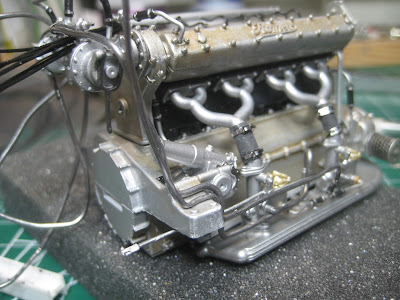Having been distracted by other builds, it's back to this MFH kit. The objective is to complete it in time for a Porsche Challenge issued through a local Facebook group last winter, with a deadline of 9/11. 911, get it? Ha ha. Right, moving right along.
The chassis is complete but pictures never got posted here.
The main issue was the flimsy door hinges which I felt could be improved to better take the weight of the white metal doors. This required ordering M0.6 screws, nuts and washers to replace the rivets provided by MFH. The main issue is the upper hinge that sits on the windshield surround, as the inner one inside the body just needed a bolt.
M0.6 bolts may be only 0.024" in diameter, but correspond to 0.600", or just about 5/8", at full scale, and this is likely twice the size of a proper real-world hinge pin -- 5/16" or 3/8" Grade 8 bolts would make more sense. However, I'm not sure M0.3 bolts can be found outside watchmaker's supplies, and I surely would have trouble handling them.
The pictures show the MFH bracket glued on to the door window frame with a couple of strips of 0.003" brass sheet to strengthen it, and the M0.6 bolt through it. I am hoping this will not be obvious once painted. You can also see the hinge bolt that will be trimmed once it's all painted and ready for final assembly.
I broke one of the window frames due to excessive manipulation, and have glued it back together with more brass strip on the inside; nonetheless this door (left side) may get glued into place.
Paint and decals are next. Stay tuned!







































